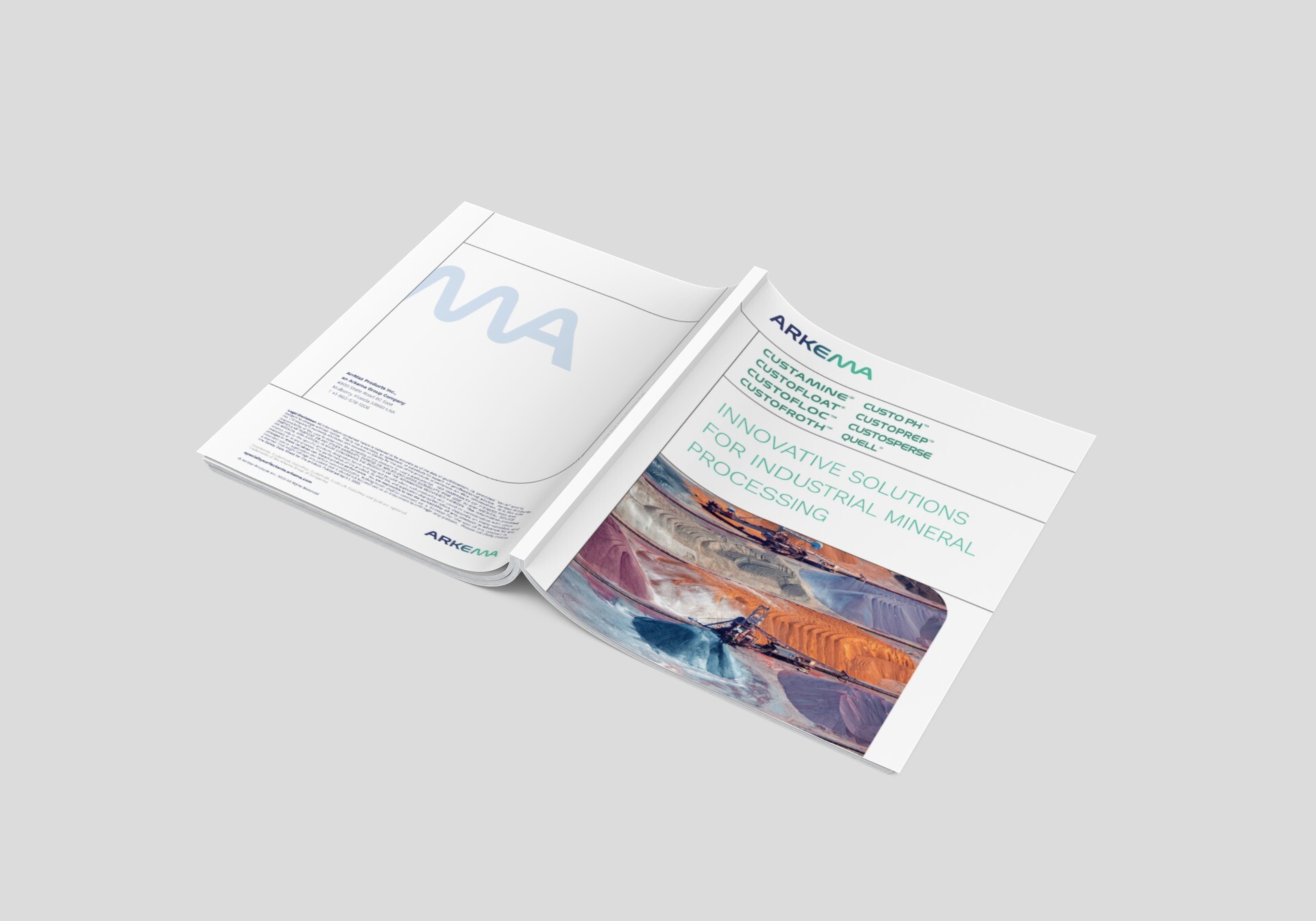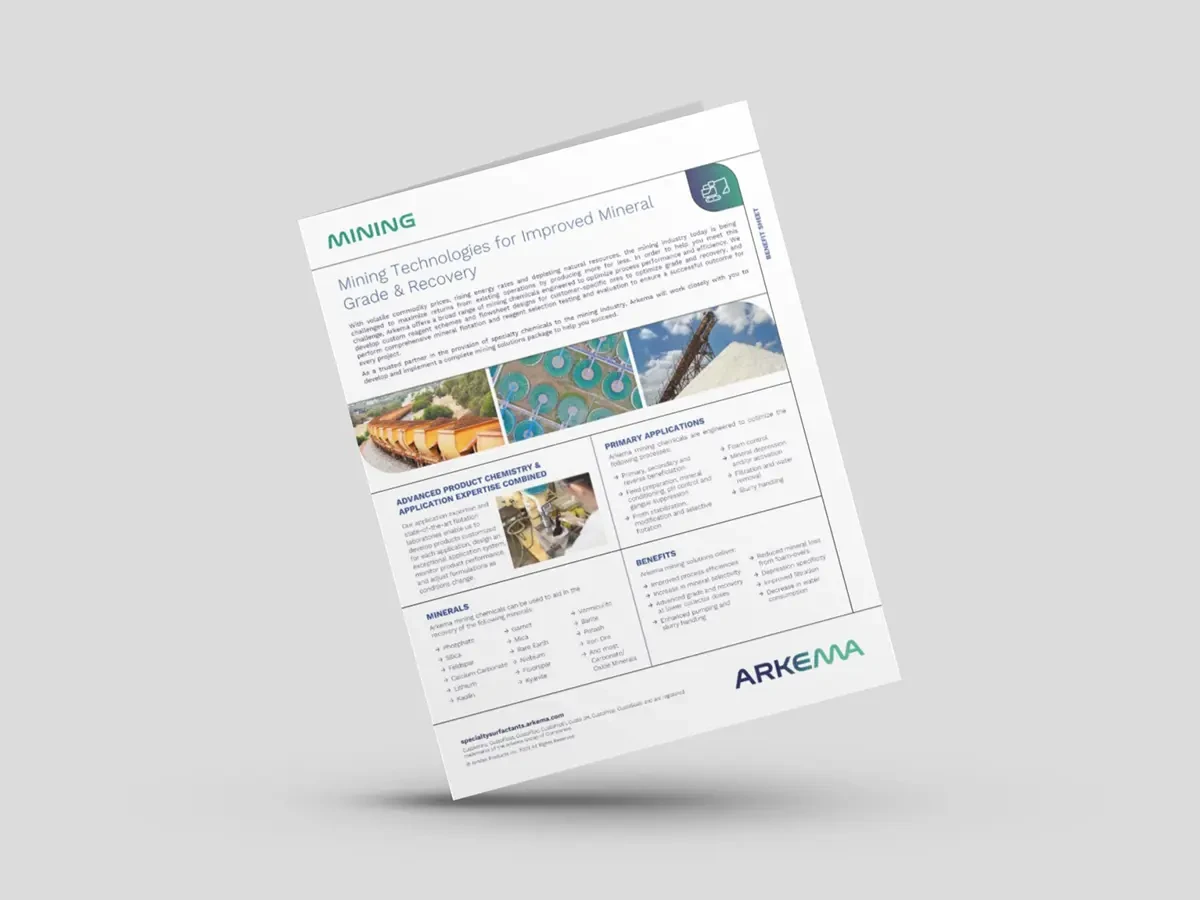Fluorspar / Fluorite Mineral Flotation
Fluorspar/fluorite mineral is split into three different grades: acid, ceramic and metallurgical. The highest grade or “acid grade fluorspar” is 97% or more CaF2 and is used to produce hydrogen fluoride or hydrofluoric acid by reacting with sulfuric acid, which is then converted into fluorine, fluorocarbons, or other diverse fluoride materials. The second highest grade, or “ceramic grade fluorspar,” is 85-95% CaF2 and is used to manufacture glass, enamel, and cooking utensils. The lowest grade, or “metallurgical grade fluorspar,” is 60–85% CaF2 and is used to help lower the melting point of raw materials used in steel production to aid in removing impurities and also in the production of aluminum.
Arkema helps producers maximize their fluorspar/fluorite mineral grade to get the most out of their fluorspar ore. We custom-develop fluorspar flotation reagents to help our customers achieve their desired selectivity, recovery, and reagent consumption. Our custom-designed fluorspar flotation flowsheet designs often include a rougher float followed by several cleaner floats to achieve the highest grade fluorspar/fluorite mineral. We also provide ongoing process consultation to help identify operational adjustments that may be needed to optimize process efficiency, such as heating the conditioning pulp or using modifying agents if carbonate minerals are present.


